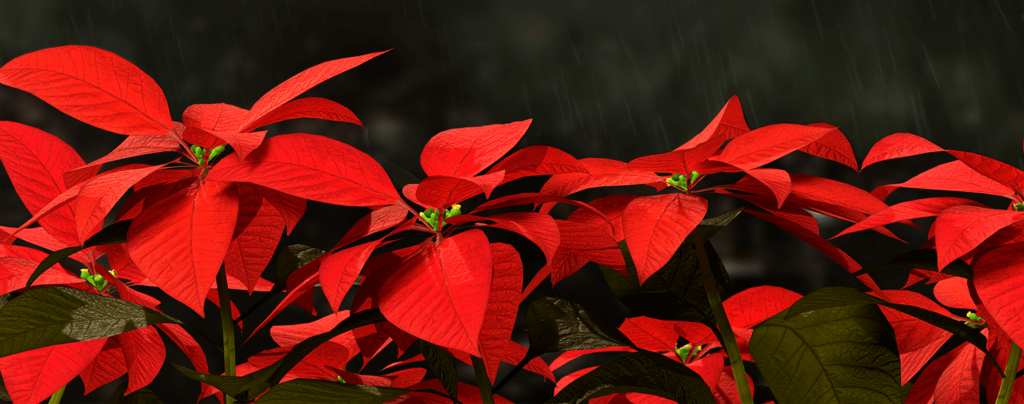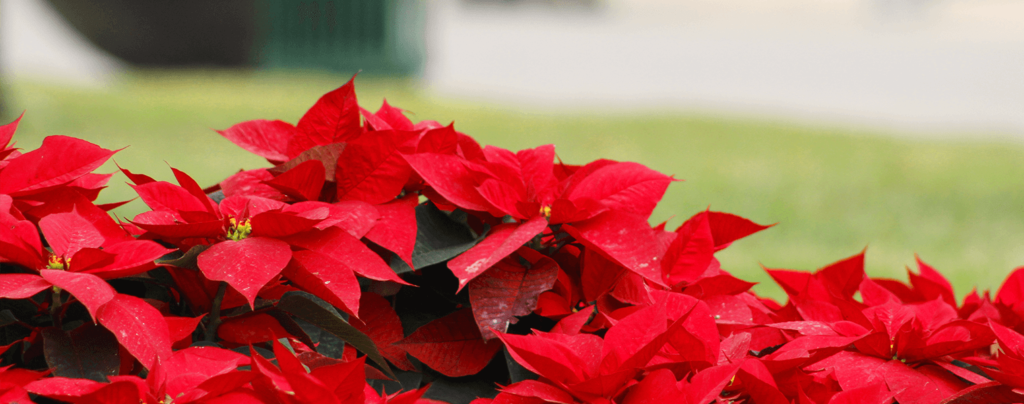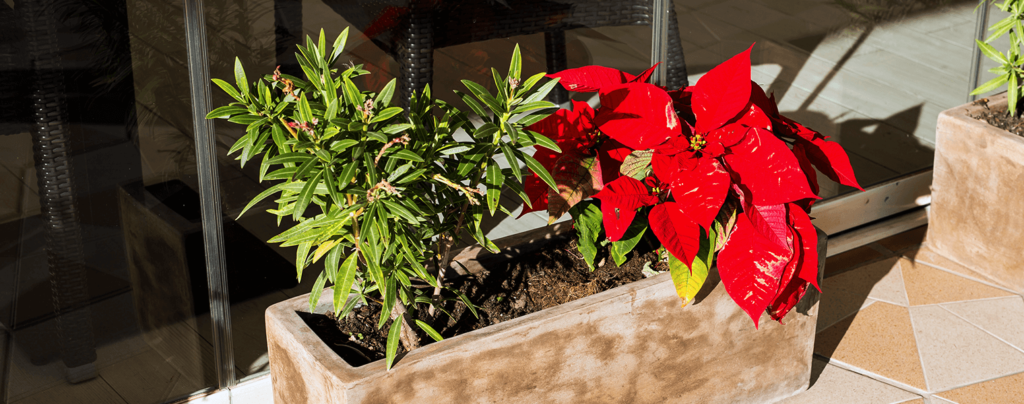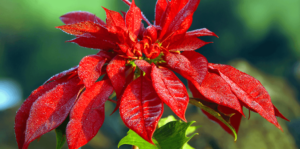For many, conversations about Christmas bring to mind pictures of snow-covered paths, cozy scarves, and hot drinks in hand to stay warm. Of course, that’s not how the holiday season looks here in South Florida thanks to our hot and sunny weather all year long! But there are many ways we can still take advantage of the sights of the season, and one of those sights—poinsettias—has tropical origins.
You’ll be amazed at the beautiful form a poinsettia plant takes when grown outside—and just to think that it used to sit on your dining room table!
Native to Mexico, poinsettias are displayed indoors often in a shiny foil-wrapped pot by many people starting late November and into the new year. Those in colder climates enjoy these colorful plants for only a few weeks each year. But people who live in plant hardiness zones 9 to 11, like here in Fort Lauderdale, can transplant poinsettias, which are perennials, to an outdoor location to enjoy year after year.

Caring for Poinsettias Indoors
To make sure your plant is strong and healthy when you transplant it outdoors, take good care of it while it’s still indoors. Place your poinsettia in a well-lit spot that’s away from drafts, and avoid direct sunlight. Water the soil when it’s dry to the touch—the soil shouldn’t be soggy, as this can lead to root rot.
While indoors, the poinsettias will appreciate humid air. You can increase humidity by placing plant pots on pebble trays with water—as the water evaporates, the air’s humidity will be boosted around the plant.

How to Transplant and Care for Poinsettias Outside
Once the holidays are over, you can move the poinsettias outside. The chance of frost is pretty low in South Florida, but it can happen! So wait until any risk of freezing temperatures has passed before you transplant your poinsettia to its new home outside.
Before planting your poinsettia outside, remove any of the bracts that have faded. Bracts are modified leaves. They’re the colorful, showy parts of the poinsettia that people sometimes think of as flowers. The flowers of a poinsettia are actually the yellow clustered buds in the center of the plant!
Poinsettias can grow quite large—up to 10 feet tall!—so find a spot in your yard with plenty of space for your poinsettia to mature. The area should get lots of sunshine and should have well-draining soil. In the fall, poinsettias should also be kept away from any artificial light sources at night, so keep that in mind when selecting a location. Exposure to light at night can delay or even prevent flowering.

You could also grow the poinsettia in a pot outside rather than directly in the ground. As it grows, you would need to gradually put the plant in larger containers.
Whether in a container or in the ground, place the poinsettia in the soil at the same depth it was growing in the container. Then, pat the soil down around the plant, and water well. Regularly water the plant, and fertilize it monthly from March to October.
As the plant grows, pinch the growing tips in summer until around mid-August. This will encourage a bushier plant rather than a tall, leggy plant. In the following years, prune in the early spring, after any risk of frost has passed. Cut back the plant within 12 to 18 inches of the ground, and remove any damaged bracts. You’ll be amazed at the beautiful form a poinsettia plant takes when grown outside—and just to think that it used to sit on your dining room table!
Poinsettias don’t have to be popular only at Christmas. Their vibrant appearance can and should be adored no matter the time of the year!

